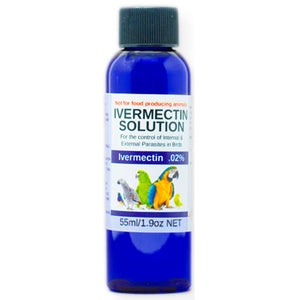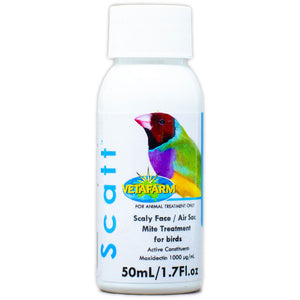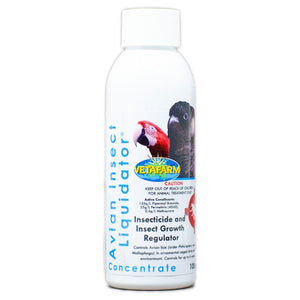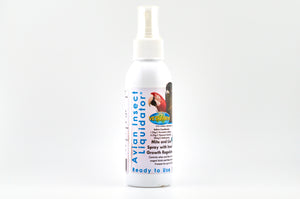Critical Calcium
Health Articles / Critical Calcium |
|
It is our belief that calcium problems are the most common and important nutritional issues facing modern bird keeping. Calcium (or a lack of it) is so important and affects so many things that bird keepers who improve their calcium supplementation get huge benefits. Read many of the other articles in this section and you will find calcium coming up time and again. Articles on bird behaviour, egg binding, breeding performance, chick problems and many more are involved in a discussion on calcium. The purpose of this article is to explain how CalciBoost uses a novel approach (mimicking nature much more closely than cuttlebone and grit) and provides far more effecient calcium supplementation.
However their are implication of this method and the main one is that this sort of supplement should not be used every day.
In April 2002 a discussion occurred on the National Finch and Softbill Society discussion group on this subject and I was invited to explain the reasons for the on/off application of this particular product. Here is my e-mail which applies just as much to any other bird or mammal:
"One contributor to this discussion has described the calcium regulation process in some detail but I am certain that she is wrong that the body will not lose the ability to regulate calcium if it is routinely bombarded with highly bio-available calcium. Let me try to give an answer based on both theory and many years of quite diverse experiences.
My first exposure to this was many years ago when I used to breed cows in Australia. Feed pregnant cows on a diet high in calcium (just good quality grass is enough) and you will get "milk fever" immediately after calving. This is a very badly named problem as it is not a fever at all. What happens is this. After calving the cow has a dramatic demand for calcium as milk production is quickly initiated. This calcium is removed from the blood by the mammary glands. If they have had a great deal of calcium in their feed they simply don't mobilise enough calcium from the bones quickly enough to cope with this demand surge. The body has lost the ability to do this simply by lack of use. The feed doesn't provide enough either. So the blood removes calcium from nerves and muscles which then fail to work properly. Cows with milk fever stagger around and fall over in a state of partial paralysis!! Any dairy farmer or dairy vet will tell you the treatment for milk fever is an intravenous injection of calcium. Sometimes they will give both calcium and magnesium. Prevention is far better than treatment as it causes far less stress. Dairy farmers feed low bio-available calcium foods to their stock prior to calving and don't have the problem as they have exercised the bone's ability to mobilise calcium quickly when required. Milk fever can occur in any mammal. When we first started to sell our CalciBoost product we were being advised by bird vets. The recommended regime was to feed the product daily. I recall one canary breeder who took that advice (in conjunction with lots of high calcium brocolli) and had 14 egg bound hens in his first round!!! He probably had just 20-30 breeding hens making this a disaster of mammoth proportions. Here the process is almost the same except as the mammal one except that the sudden calcium demand comes from egg shell production. Again the nerves and muscles are starved of calcium and the hen is unable to expel the egg (which may or may not have a soft shell). We like to think of ourselves as a firm that tries to understand how our products are working or failing our customers. The similarity to milk fever was obvious so, at that point, we changed our recommendation to incorporate breaks from CalciBoost. Our general recommendation is 1-2 times a week for non breeders and up to 5 times a week for breeders. However CalciBoost on alternate days or four days on three off or anything similar will be fine. The amount of calcium (hardness) in your water will also influence the requirement. I know of a budgie breeder from a very hard water area who uses CalciBoost once a week for non breeders and just twice a week for breeders. He doesn't use cuttlefish or grit but he has fit hens and large clutches. In very soft water areas five days a week at full dose may not be quite enough! Nobody reports egg binding problems on these various regimes yet we do get larger clutch sizes and far fitter hens capable of producing more rounds with no stress to their system. This on/off calcium system works very well. It exercises the body's ability to regulate calcium levels. It give plenty of calcium to maintain high bone calcium levels (and hence the ability to make plenty of eggs*). Yet gives plenty of opportunity to remove excess calcium from the body and causing damage to the kidneys or other organs. *As an aside the bones of a small bird (work done on canaries) contain about enough calcium to make 3.5 eggs. So it is obvious if we want clutches of 6-8 (I can think of plenty of our zebra finch breeder customers producing 9-10 fertile eggs in some clutches from selected hens) that the calcium regime has to be excellent. We like to think that nature has designed perfect systems. Unfortunately this is not true. And when we keep animals in captivity we sometimes push the biology to the limit without realising it. Let me quote a human example: Many years ago my wife, Sally, used to work for Mars. There was always free confectionary available in the office all day long. We lived 45 minutes from her office and, by the time I had driven her home she was shaking. She couldn't do anything until she ate a biscuit! What was happening was that, by constantly bombarding her blood with sugar and glucose, she was losing the ability to control her blood sugar level when she needed to. When the blood sugar level dropped on the way home she couldn't replace it from her glycogen reserves. The process (which is well understood and involves the hormone insulin) simply failed to adapt to Sally's diet. She didn't have diabetes. When she stopped stuffing herself with candies the problem went away. These problems occur because nature cannot afford to waste resources. If we are not using something the body reduces the resources allocated to it. I can think of many examples. People taking little excersise lose bone mass and muscle mass. The reverse is that athletes gain bone and muscle mass. Move to high altitude and you will produce more red blood cells to get better value from the low levels of oxygen in the air. Go back to sea level and the process reverses. Stop the need to remove calcium form the bones and the body reduces the resources allocated to making the parathyroid hormone needed for the job. These changes can lead to dramatic effects when we stress the system. A non athlete is far more likely to break a bone if he plays a game a soccer. People die of altitude sickness if they climb too quickly. Birds get egg bound if their calcium regime isn't adequate. So my view is that the miracle of life is fantastic. But we can easily push it beyond its limits. Traditional bird keeper calcium sources (cuttlebone and oystershell grit) don't provide enough bio-available calcium. Our bird's bodies are not designed to take calcium from inorganic sources like that. Small clutches, egg binding and rickets are the common results. Wild birds get their calcium from naturally chelated sources in fresh green seeds and foods. Humans get theirs from fresh foods and chelated sources like milk. CalciBoost mimics these more natural systems which is why it is so effective. But the wise use it with care and follow the manufacturer's instructions! I hope this has helped to explain the dilemma and answer Sue's original question. Malcolm Green " Following this one member of the group asked if there was any scientific data behind the dose rates we now recommend for this product. The simple answer is that we have achieved these recommendations by a process of trial and error. A more complete answer is quoted from the NFSS discussion group below:
"Of course I would love to be able to say that there was rigorous scientific data on this subject. But there isn't. Unfortunately the cage and aviary bird market is just too small for much genuine science. Indeed even big industries like poultry etc rely mostly on 'field trials' which are of questionable scientific value.
What we do have is many years of experience, initially with customer trials, and then with market experience selling the product that show that our recommendations cover almost all circumstances very successfully. One of the dilemmas we have is that nutritional information tends to be given in terms of the percentage of a nutrient in the diet. Unfortunately this becomes relatively useless if the bio-availability of the nutrient is different depending on the form in which it is supplied. Calcium is an excellent example of this. The general 'rule of thumb' for calcium is that it should make up 1% of the bird's diet. I have seen extremes as high as 3% in things like poultry pellets and ostrich pellets. Even these high levels can fail if the bio-availabilty is poor (we regularly fix calcium problems in turkeys on these high calcium diets with short bursts of CalciBoost - the same was true of ostriches when we had them in the UK a few years ago). Traditionally calcium is added to pellets (poultry or parrot or finch) as calcium carbonate or calcium phosphate. Cuttlebone and oystershell grit are also calcium carbonate. These are both very low in bio-availability (by which I mean they are difficult to absorb into the blood stream and difficult to manage once in the blood). The level of calcium we originally used to recommend in the CalciBoost technology was about 0.08% every day (1/12th of the accepted norm). We now suggest a range between 0.04% and 0.08% but only between one and five days a week depending on the time in the breeding cycle (and on species with African Greys and Eclectus parrots requiring slightly more) so this is between 1/35th and 1/175th of the 'rule of thumb'. I wouldn't like anyone to think I am criticising pellet manufacturers for not using better calcium sources. Clearly they cannot use this technology in a food that is fed daily - it could create problems. These broad ranges may seem very vague. But we must remember that animals' nutrient requirements are not incredibly precise. Nature has designed its systems to tolerate a significant variation in nutrient inputs. Problems only arise if high or low levels are either very extreme or very prolonged. So long as we keep our calcium inputs within the tolerable range (and cope with seasonal variations in their requirements) the birds will be healthy and productive. The traditional problem with bird keeping is that the calcium sources we have always used are very unnatural. So it is not surprising that they fail so often. Most wild birds get their calcium from their green and fresh foods not from eating cuttlebone. The CalciBoost approach is far closer to mimicking these natural (low level but high bioavailability) food sources which is why it works so well. It is worth making a point about extremes. There is still a need for a bit of stockmanship in extreme situations. If drinking water is VERY hard (contains LOTS of calcium) CalciBoost requirements will be lower. I can think of one UK budgie breeder who has very hard water and he uses no grit and no cuttlebone. Most of the year he uses Calcivet just once a week. For breeding he only increases this to twice a week - very economical. He has excellent clutch sizes, no egg binding and very fit hens. A very few people (perhaps six people from about 20,000 customers) have claimed slightly too thick egg shells using CalciBoost in addition to very hard tap water. These people simply cut down on the amount and/or frequency of supplement and the problem seems to go away. Despite the very hard water these people still had problems with egg binding and smaller clutches BEFORE they used CalciBoost so they continue to use the supplement now - they have just modified the amount they use. At the other extreme some people in very soft water areas may use a tiny bit more than our recommended levels. There is one thing that I am certain about and that is that calcium deficiency is the biggest and most common problem in modern bird keeping. Most of the behavioral and breeding problems related to calcium have been assumed to be 'normal'. We now know they are not normal. One of our challenges is to raise the expectations of people with regard to issues such as clutch sizes, egg binding, number of rounds that can be safely taken etc etc. Not surprisingly many people are very skeptical of something new like this. In the end there is only one way to see if it is going to help you and that is to try it yourself. Malcolm Green " |




